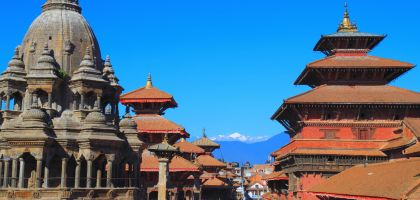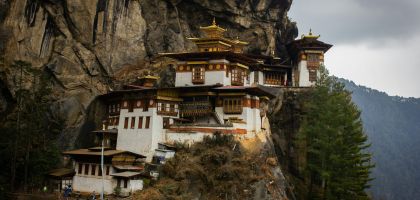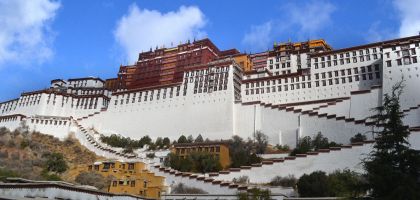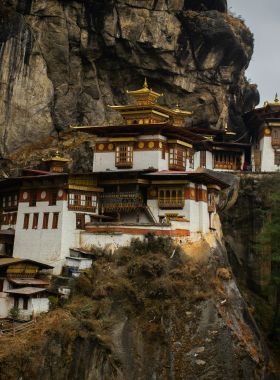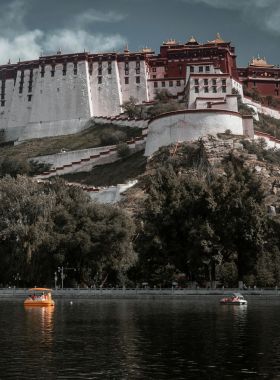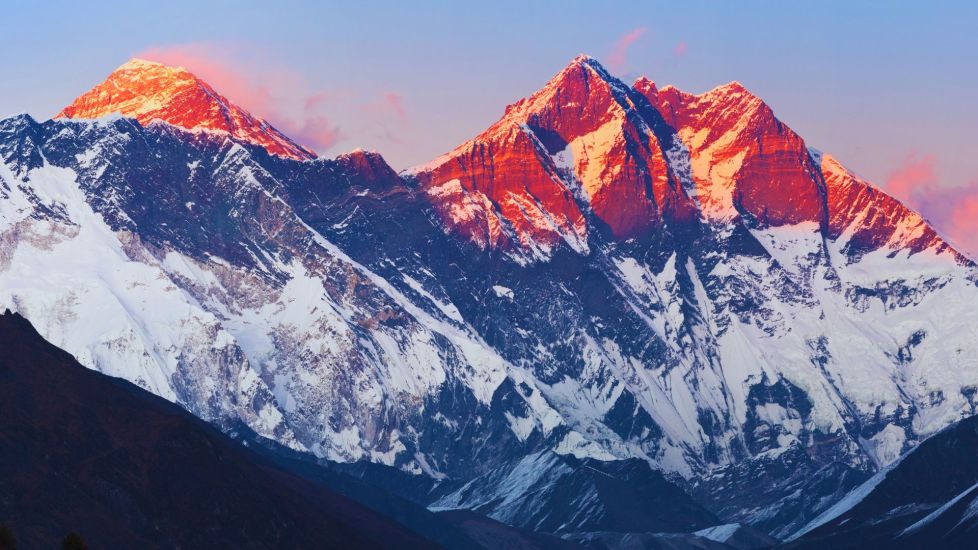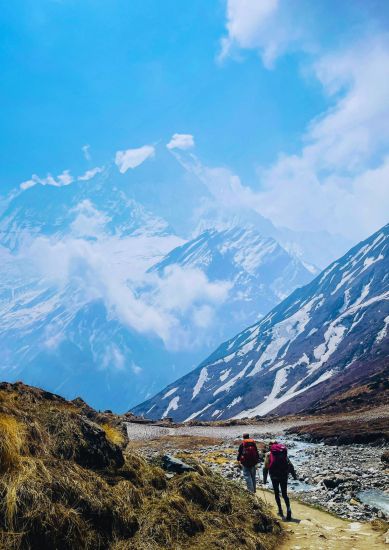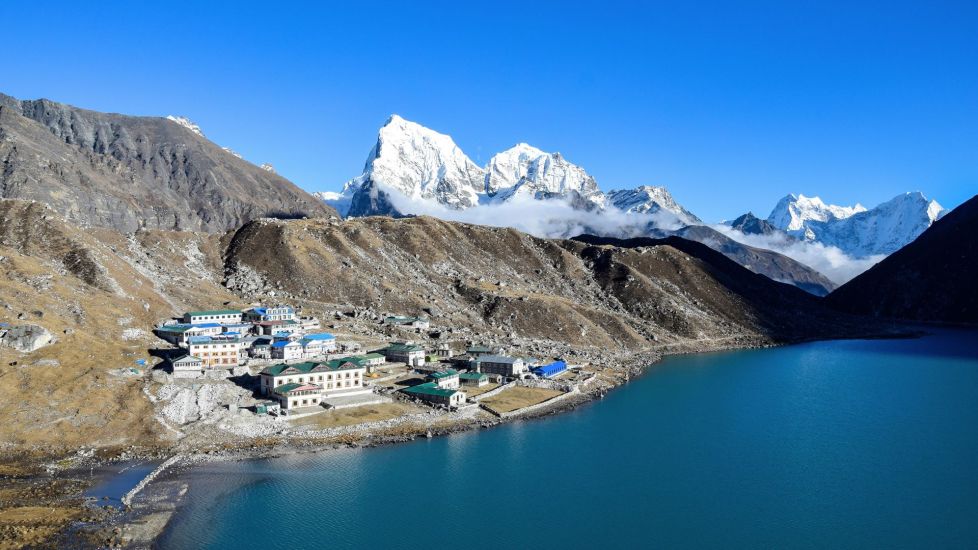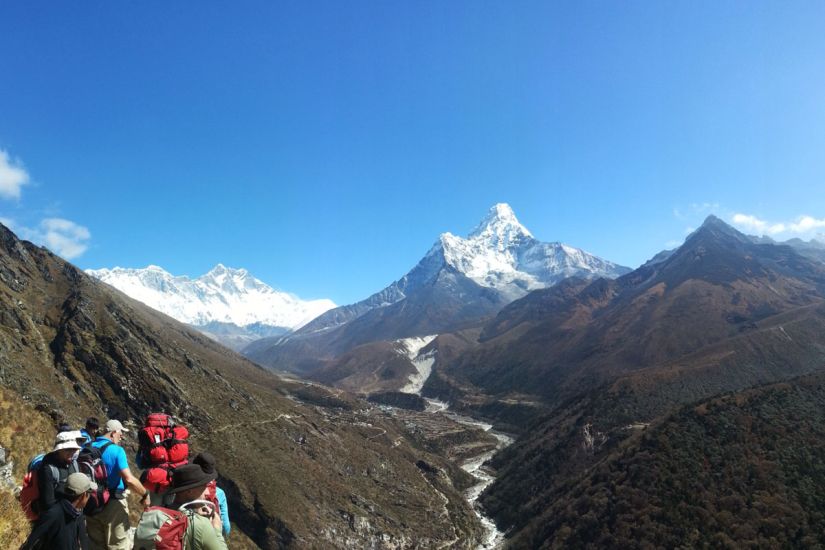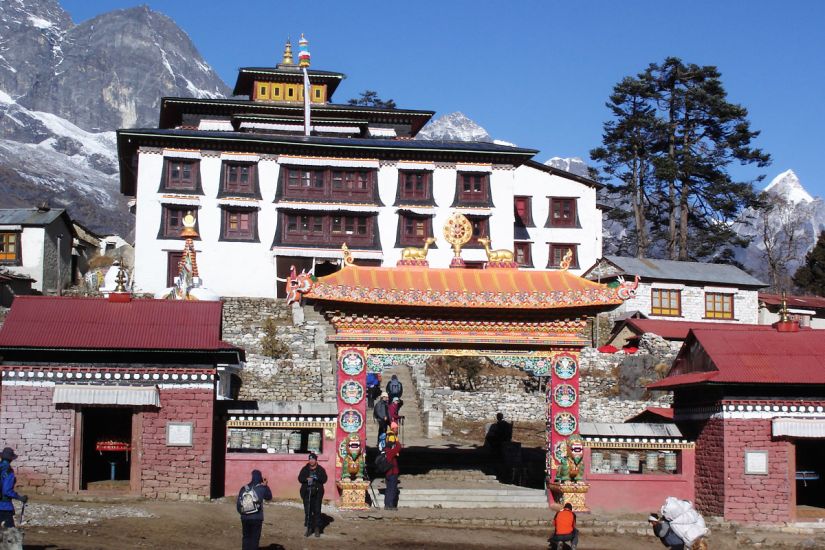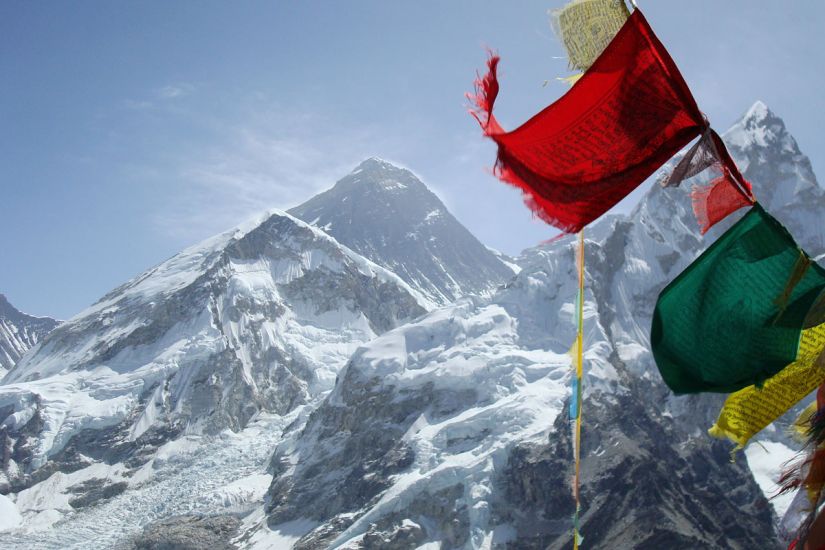Everest Three Passes Trek
20 Days / Nepal
Activity
Difficulty Level
Destinations
Trip Start / End
Max Altitude
Accommodation
Travel Style
Best time to travel
Personalized Travel Advice

Dev Raj Nepal
+977 9851096523
Detailed Itinerary
01
DAY
01
Upon your arrival, you will be warmly welcomed at the airport and comfortably transferred to your hotel. Depending on your arrival time, you have the option to unwind and settle in at your hotel or venture out to explore the vibrant bazaars of Kathmandu. Wander through the lively streets, where the hustle and bustle of local markets offer a perfect introduction to the city’s rich culture and heritage.
Arrival in Kathmandu
Upon your arrival, you will be warmly welcomed at the airport and comfortably transferred to your hotel. Depending on your arrival time, you have the option to unwind and settle in at your hotel or venture out to explore the vibrant bazaars of Kathmandu. Wander through the lively streets, where the hustle and bustle of local markets offer a perfect introduction to the city’s rich culture and heritage.
02
DAY
02
After breakfast, start your day with a visit to Swayambhunath Stupa (Monkey Temple), where you can enjoy panoramic views of Kathmandu Valley and the peaceful atmosphere of this UNESCO site. Next, head to Kathmandu Durbar Square, a historic royal palace complex, surrounded by beautiful temples and ancient architecture.
From there, wander through the vibrant Ason Market, a lively bazaar filled with spices, textiles, and local goods, offering a glimpse into daily life in Kathmandu. Then, explore the bustling streets of Thamel, where you can pick up any last-minute trekking gear or souvenirs.
In the evening, meet with your trekking guide to finalize your preparations. This is a great time to check your gear, discuss the trek details, and get advice on what to expect along the way. By the end of the day, you’ll be ready for your adventure ahead!
Kathmandu: sightseeing and trek preparation
After breakfast, start your day with a visit to Swayambhunath Stupa (Monkey Temple), where you can enjoy panoramic views of Kathmandu Valley and the peaceful atmosphere of this UNESCO site. Next, head to Kathmandu Durbar Square, a historic royal palace complex, surrounded by beautiful temples and ancient architecture.
From there, wander through the vibrant Ason Market, a lively bazaar filled with spices, textiles, and local goods, offering a glimpse into daily life in Kathmandu. Then, explore the bustling streets of Thamel, where you can pick up any last-minute trekking gear or souvenirs.
In the evening, meet with your trekking guide to finalize your preparations. This is a great time to check your gear, discuss the trek details, and get advice on what to expect along the way. By the end of the day, you’ll be ready for your adventure ahead!
03
DAY
03
This morning, take a thrilling early flight to Lukla, the gateway to the Everest region. The flight offers stunning views of the snow-capped peaks and valleys, making it an unforgettable experience. Upon arrival, you’ll meet your trekking crew and prepare for the adventure ahead.
The trek from Lukla to Phakding is an exciting introduction to the Everest region. You’ll follow a well-established trail that descends gradually through alpine forests. The path winds along the Dudh Koshi River, with scenic views of terraced fields and small villages along the way. As you cross several suspension bridges adorned with colorful prayer flags, you’ll hear the rush of the river below and feel the cool mountain air.
Along the trail, you’ll pass through villages such as Ghat and encounter friendly locals, including Sherpas, and children heading to school. The landscape is dotted with prayer wheels, stupas, and monasteries, giving you a glimpse into the spiritual heart of the region.
After around 3 to 4 hours of trekking, you’ll reach Phakding. This peaceful village lies in the shadow of the surrounding peaks, with lovely views of the valley. Upon arrival, take some time to relax, enjoy a warm meal, and absorb the stunning surroundings as you prepare for the more challenging days ahead.
Fly to Lukla, trek to Phakding
This morning, take a thrilling early flight to Lukla, the gateway to the Everest region. The flight offers stunning views of the snow-capped peaks and valleys, making it an unforgettable experience. Upon arrival, you’ll meet your trekking crew and prepare for the adventure ahead.
The trek from Lukla to Phakding is an exciting introduction to the Everest region. You’ll follow a well-established trail that descends gradually through alpine forests. The path winds along the Dudh Koshi River, with scenic views of terraced fields and small villages along the way. As you cross several suspension bridges adorned with colorful prayer flags, you’ll hear the rush of the river below and feel the cool mountain air.
Along the trail, you’ll pass through villages such as Ghat and encounter friendly locals, including Sherpas, and children heading to school. The landscape is dotted with prayer wheels, stupas, and monasteries, giving you a glimpse into the spiritual heart of the region.
After around 3 to 4 hours of trekking, you’ll reach Phakding. This peaceful village lies in the shadow of the surrounding peaks, with lovely views of the valley. Upon arrival, take some time to relax, enjoy a warm meal, and absorb the stunning surroundings as you prepare for the more challenging days ahead.
04
DAY
04
Today’s trek takes you deeper into the heart of the Khumbu region. Walking through dense rhododendron and pine forests, you cross multiple high-suspension bridges, including the famous Hillary Suspension Bridge. As you ascend, the first glimpses of Everest come into view. The final stretch is a steep climb to Namche Bazaar, the lively trading hub of the Sherpa people. This vibrant town offers cozy teahouses, bakeries, and stunning mountain panoramas. Here, you settle in and begin adjusting to the altitude. Overnight at a Guesthouse.
Phakding to Namche Bazaar
Today’s trek takes you deeper into the heart of the Khumbu region. Walking through dense rhododendron and pine forests, you cross multiple high-suspension bridges, including the famous Hillary Suspension Bridge. As you ascend, the first glimpses of Everest come into view. The final stretch is a steep climb to Namche Bazaar, the lively trading hub of the Sherpa people. This vibrant town offers cozy teahouses, bakeries, and stunning mountain panoramas. Here, you settle in and begin adjusting to the altitude. Overnight at a Guesthouse.
05
DAY
05
To aid acclimatization, you spend the day exploring Namche Bazaar and hiking to Everest View Hotel, one of the highest-altitude hotels in the world. This hike provides breathtaking views of Everest, Lhotse, and Ama Dablam. You may also visit the Sherpa Culture Museum or the local monastery. After enjoying the views, you return to Namche to relax and prepare for the next leg of your journey. Overnight at a Guesthouse.
Namche Bazaar: Rest and acclimatization
To aid acclimatization, you spend the day exploring Namche Bazaar and hiking to Everest View Hotel, one of the highest-altitude hotels in the world. This hike provides breathtaking views of Everest, Lhotse, and Ama Dablam. You may also visit the Sherpa Culture Museum or the local monastery. After enjoying the views, you return to Namche to relax and prepare for the next leg of your journey. Overnight at a Guesthouse.
06
DAY
06
Leaving Namche, the trail winds through rhododendron forests and offers stunning views of Everest, Nuptse, and Ama Dablam. After crossing the Dudh Koshi River, you ascend towards Tengboche, home to the famous Tengboche Monastery. The monastery, set against a backdrop of towering peaks, is the spiritual heart of the Khumbu region. Here, you can witness Buddhist chants and take in the serene atmosphere before resting for the night. Overnight at a guesthouse.
Namche Bazaar to Tengboche
Leaving Namche, the trail winds through rhododendron forests and offers stunning views of Everest, Nuptse, and Ama Dablam. After crossing the Dudh Koshi River, you ascend towards Tengboche, home to the famous Tengboche Monastery. The monastery, set against a backdrop of towering peaks, is the spiritual heart of the Khumbu region. Here, you can witness Buddhist chants and take in the serene atmosphere before resting for the night. Overnight at a guesthouse.
07
DAY
07
The trek continues through rugged alpine terrain, where you will descend through dense forests before beginning the ascent towards Pangboche, home to the highest permanent Sherpa settlement in the region. As you gain altitude, the lush greenery of the forests gradually gives way to smaller shrubs and wide, open landscapes that showcase the stark beauty of the Himalayas. Upon reaching Dingboche, a charming village nestled in a breathtaking valley, you’ll be surrounded by towering snow-capped peaks, creating a stunning contrast to the previous terrain. This village offers a tranquil setting to rest and acclimatize, ensuring you’re well-prepared for the challenges ahead. It’s an ideal place to relax, enjoy the scenery, and prepare for the next phase of your journey. Overnight at a guesthouse.
Tengboche to Dingboche
The trek continues through rugged alpine terrain, where you will descend through dense forests before beginning the ascent towards Pangboche, home to the highest permanent Sherpa settlement in the region. As you gain altitude, the lush greenery of the forests gradually gives way to smaller shrubs and wide, open landscapes that showcase the stark beauty of the Himalayas. Upon reaching Dingboche, a charming village nestled in a breathtaking valley, you’ll be surrounded by towering snow-capped peaks, creating a stunning contrast to the previous terrain. This village offers a tranquil setting to rest and acclimatize, ensuring you’re well-prepared for the challenges ahead. It’s an ideal place to relax, enjoy the scenery, and prepare for the next phase of your journey. Overnight at a guesthouse.
08
DAY
08
A crucial acclimatization day in Dingboche includes a hike to Nagarjun Hill. This steep climb rewards you with panoramic views of Makalu, Lhotse, and Ama Dablam. The challenging ascent helps your body adjust to the altitude, reducing the risk of altitude sickness. After the hike, you return to Dingboche to relax and prepare for the journey ahead. Overnight at a guesthouse.
Dingboche: Acclimatization and rest
A crucial acclimatization day in Dingboche includes a hike to Nagarjun Hill. This steep climb rewards you with panoramic views of Makalu, Lhotse, and Ama Dablam. The challenging ascent helps your body adjust to the altitude, reducing the risk of altitude sickness. After the hike, you return to Dingboche to relax and prepare for the journey ahead. Overnight at a guesthouse.
09
DAY
09
Our journey begins as we trek through stone-walled fields, crossing the scenic Imja Khola valley, before venturing into the rugged glacier moraines that lie beneath the imposing Himalayas. The path leads us to Bibre, a traditional yak herding settlement, where we can experience the tranquil rural life of the Sherpa people. From here, the awe-inspiring peaks of Ama Dablam and Amphu Labsa dominate the view directly across the valley, creating a stunning visual backdrop. As we continue, the trail crosses several icy streams, adding a thrilling element to our hike.
After walking for about half an hour, we reach Chhukung, a small, peaceful village surrounded by the towering peaks of the region. Following a well-deserved lunch break, we set off towards Chhukung Ri. The climb to the summit of Chhukung Ri is relatively straightforward, although there are some easy scrambles near the top that require a bit of effort. Once at the summit, the panoramic views are nothing short of spectacular. The jagged peaks of Ama Dablam and Amphu Labsa loom directly across the valley, offering a truly unforgettable sight.
After soaking in the beauty from the top, we descend back to Chhukung for a restful night in this quiet, scenic village.
Dingboche to Chhukung, climb Chhukung Ri
Our journey begins as we trek through stone-walled fields, crossing the scenic Imja Khola valley, before venturing into the rugged glacier moraines that lie beneath the imposing Himalayas. The path leads us to Bibre, a traditional yak herding settlement, where we can experience the tranquil rural life of the Sherpa people. From here, the awe-inspiring peaks of Ama Dablam and Amphu Labsa dominate the view directly across the valley, creating a stunning visual backdrop. As we continue, the trail crosses several icy streams, adding a thrilling element to our hike.
After walking for about half an hour, we reach Chhukung, a small, peaceful village surrounded by the towering peaks of the region. Following a well-deserved lunch break, we set off towards Chhukung Ri. The climb to the summit of Chhukung Ri is relatively straightforward, although there are some easy scrambles near the top that require a bit of effort. Once at the summit, the panoramic views are nothing short of spectacular. The jagged peaks of Ama Dablam and Amphu Labsa loom directly across the valley, offering a truly unforgettable sight.
After soaking in the beauty from the top, we descend back to Chhukung for a restful night in this quiet, scenic village.
10
DAY
10
We begin our trek early in the morning, aiming to reach the highest point of the journey, Kongma La Pass (5,535). There are two possible routes to choose from: one involves crossing a hill to the northwest of Chhukung, navigating the Nuptse Glacier moraines, while the other takes us back to Bibre, where we trek along the trail above the Niyang Khola. The summit of the pass is marked by cairns and colorful Buddhist prayer flags. Take a moment to snap some photos and enjoy the breathtaking views.
The descent from the pass is often considered more challenging than the ascent. After crossing a moraine on the far side, the trail veers northward through the Khumbu Glacier, leading us towards Lobuche. After this demanding day, we’ll settle in for the night at a cozy guesthouse.
Chhukung – Kongma La – Lobuche
We begin our trek early in the morning, aiming to reach the highest point of the journey, Kongma La Pass (5,535). There are two possible routes to choose from: one involves crossing a hill to the northwest of Chhukung, navigating the Nuptse Glacier moraines, while the other takes us back to Bibre, where we trek along the trail above the Niyang Khola. The summit of the pass is marked by cairns and colorful Buddhist prayer flags. Take a moment to snap some photos and enjoy the breathtaking views.
The descent from the pass is often considered more challenging than the ascent. After crossing a moraine on the far side, the trail veers northward through the Khumbu Glacier, leading us towards Lobuche. After this demanding day, we’ll settle in for the night at a cozy guesthouse.
11
DAY
11
Today, we rise early, brimming with excitement and energy as we set our sights on Everest Base Camp. After a quick breakfast, we begin our trek to Gorakshep, navigating the rocky, uphill trail across the Khumbu Glacier. Along the way, we may witness avalanches tumbling down Nuptse from a safe distance and hear the occasional crack of the Khumbu Glacier beneath us.
Once we reach Gorakshep (5,153m), we’ll have lunch and drop off our bags before heading out toward Everest Base Camp with only our day packs. The trail grows steeper and rockier as we make our way closer to the base camp. Positioned on the Khumbu Glacier, Everest Base Camp offers stunning views of the Khumbu Icefall, Mt. Khumbutse, and Pumori, though Mt. Everest itself is hidden from view. During March and April, the base camp comes alive with vibrant clusters of colorful tents as numerous expedition groups prepare for their summit attempts. It’s an incredible experience to witness top mountaineers gearing up for their climb of the world’s highest peak. We trek back to Gorak Shep and spend the night at a guesthouse.
Lobuche to Gorak Shep , visit Everest Base Camp
Today, we rise early, brimming with excitement and energy as we set our sights on Everest Base Camp. After a quick breakfast, we begin our trek to Gorakshep, navigating the rocky, uphill trail across the Khumbu Glacier. Along the way, we may witness avalanches tumbling down Nuptse from a safe distance and hear the occasional crack of the Khumbu Glacier beneath us.
Once we reach Gorakshep (5,153m), we’ll have lunch and drop off our bags before heading out toward Everest Base Camp with only our day packs. The trail grows steeper and rockier as we make our way closer to the base camp. Positioned on the Khumbu Glacier, Everest Base Camp offers stunning views of the Khumbu Icefall, Mt. Khumbutse, and Pumori, though Mt. Everest itself is hidden from view. During March and April, the base camp comes alive with vibrant clusters of colorful tents as numerous expedition groups prepare for their summit attempts. It’s an incredible experience to witness top mountaineers gearing up for their climb of the world’s highest peak. We trek back to Gorak Shep and spend the night at a guesthouse.
12
DAY
12
We begin our ascent to Kala Patthar (5,545m) at the crack of dawn, hoping to witness the first light of day illuminating the majestic Mt. Everest. The early start means we’ll be trekking in the dark, braving the cold, with temperatures varying based on the season. Be prepared for the possibility of strong, chilly winds along the way, which are quite common. As we climb, the towering peaks of Lingtren, Khumbutse, Changtse, Everest, and Nuptse will greet us, creating a truly awe-inspiring backdrop. After hours of steady climbing, we finally reach the top of Kala Patthar, where the close-up views of Everest and the surrounding peaks are nothing short of spectacular. We take time to absorb the beauty before making our way back down to Lobuche for the night.
Gorak Shep to Kala Patthar, then to Lobuche
We begin our ascent to Kala Patthar (5,545m) at the crack of dawn, hoping to witness the first light of day illuminating the majestic Mt. Everest. The early start means we’ll be trekking in the dark, braving the cold, with temperatures varying based on the season. Be prepared for the possibility of strong, chilly winds along the way, which are quite common. As we climb, the towering peaks of Lingtren, Khumbutse, Changtse, Everest, and Nuptse will greet us, creating a truly awe-inspiring backdrop. After hours of steady climbing, we finally reach the top of Kala Patthar, where the close-up views of Everest and the surrounding peaks are nothing short of spectacular. We take time to absorb the beauty before making our way back down to Lobuche for the night.
13
DAY
13
Leaving Lobuche, we begin our descent along a trail that follows the edge of the Khumbu Glacier. Soon, the path splits, and we opt for the one on the right, which offers a clearer view of the imposing Awi Peak. As we continue, we pass a stupa and distant tombstones, adding a sense of reverence to the surroundings. The path then begins to rise, leading us into an ascent. Not far from here, we spot the serene Chola Tsho Lake. Pressing on, we come across another, smaller lake before crossing the Chola Khola River on a bridge. Eventually, we reach Dzongla, where we’ll rest for the night.
Lobuche to Dzongla
Leaving Lobuche, we begin our descent along a trail that follows the edge of the Khumbu Glacier. Soon, the path splits, and we opt for the one on the right, which offers a clearer view of the imposing Awi Peak. As we continue, we pass a stupa and distant tombstones, adding a sense of reverence to the surroundings. The path then begins to rise, leading us into an ascent. Not far from here, we spot the serene Chola Tsho Lake. Pressing on, we come across another, smaller lake before crossing the Chola Khola River on a bridge. Eventually, we reach Dzongla, where we’ll rest for the night.
14
DAY
14
We begin the day early, ready to tackle the challenging Chola Pass. The early morning hours often offer the most favorable weather for crossing high-altitude passes, with calmer winds and clearer skies. As the day progresses, however, the wind tends to pick up, and the melting ice can pose additional hazards, making it crucial to cross the pass as early as possible.
After about five hours of steady climbing up a rocky incline, we finally reach the top of the Chola Pass, where the panoramic views are breathtaking. From here, the trail steeply descends, leading us to Thaknak, where we’ll pause for a well-earned lunch. Refueled and ready to continue, we trek for another two and a half hours, eventually reaching Gokyo Village. Known for its stunning beauty, Gokyo (5,357m) is one of the most picturesque spots in the Everest region, offering spectacular views of the surrounding peaks and lakes. We’ll spend the night in a cozy guesthouse, resting and soaking in the incredible scenery.
Trek to Gokyo via Cho La pass
We begin the day early, ready to tackle the challenging Chola Pass. The early morning hours often offer the most favorable weather for crossing high-altitude passes, with calmer winds and clearer skies. As the day progresses, however, the wind tends to pick up, and the melting ice can pose additional hazards, making it crucial to cross the pass as early as possible.
After about five hours of steady climbing up a rocky incline, we finally reach the top of the Chola Pass, where the panoramic views are breathtaking. From here, the trail steeply descends, leading us to Thaknak, where we’ll pause for a well-earned lunch. Refueled and ready to continue, we trek for another two and a half hours, eventually reaching Gokyo Village. Known for its stunning beauty, Gokyo (5,357m) is one of the most picturesque spots in the Everest region, offering spectacular views of the surrounding peaks and lakes. We’ll spend the night in a cozy guesthouse, resting and soaking in the incredible scenery.
15
DAY
15
We rise early today with the goal of reaching Gokyo Ri before sunrise, as it offers one of the most incredible viewpoints in the region. The steep 600-meter climb may challenge us, but the reward is worth every step. From the summit, we’re treated to a mesmerizing view of four of the world’s highest peaks – Mt. Everest, Cho Oyu, Lhotse, and Makalu – bathed in the warm glow of the morning sun.
After soaking in the breathtaking panorama, we descend back to Gokyo village for a well-deserved breakfast. The rest of the day is free for exploration, allowing us to wander around the picturesque village, visit its serene lakes, or simply relax and enjoy the stunning surroundings. As the day winds down, we return to our guesthouse for the night, reflecting on the unforgettable sights we’ve witnessed.
Rest day in Gokyo: Climb Gokyo Ri & Excursion
We rise early today with the goal of reaching Gokyo Ri before sunrise, as it offers one of the most incredible viewpoints in the region. The steep 600-meter climb may challenge us, but the reward is worth every step. From the summit, we’re treated to a mesmerizing view of four of the world’s highest peaks – Mt. Everest, Cho Oyu, Lhotse, and Makalu – bathed in the warm glow of the morning sun.
After soaking in the breathtaking panorama, we descend back to Gokyo village for a well-deserved breakfast. The rest of the day is free for exploration, allowing us to wander around the picturesque village, visit its serene lakes, or simply relax and enjoy the stunning surroundings. As the day winds down, we return to our guesthouse for the night, reflecting on the unforgettable sights we’ve witnessed.
16
DAY
16
We begin our day early to prepare for the long trek ahead. The trail initially leads us along the scenic shores of Dudh Pokhari (lake), where we enjoy the tranquil surroundings. After about two hours of walking, we begin our descent toward the Renjo La Pass. Along the way, we are treated to panoramic views of the majestic Himalayan and Rolwaling mountain ranges, along with several other peaks that dominate the skyline.
The views from the Renjo La Pass are nothing short of spectacular, resembling the breathtaking panorama we saw from Gokyo Ri. From the pass, we can gaze down at the third Gokyo Lake, with Gokyo Village nestled below the gray expanse of the Ngozumpa Glacier. The pass also offers one of the best views of Mt. Everest, its towering presence framed by the surrounding peaks.
Continuing from the pass, the trail descends sharply down a stone staircase before leading us over loose scree to the south bank of Angladumba Tsho Lake. The icy conditions on the trail can make the descent more challenging and potentially hazardous, so we must tread carefully. Along the way, we pass by the serene Relama Tsho and Renjo Lakes, adding to the beauty of the journey.
As we continue, we make our way down a narrow valley filled with giant boulders, eventually reaching Lumde. This is where we’ll spend the night, reflecting on the incredible views and the day’s accomplishments.
Gokyo to Lumde via Renjo La Pass
We begin our day early to prepare for the long trek ahead. The trail initially leads us along the scenic shores of Dudh Pokhari (lake), where we enjoy the tranquil surroundings. After about two hours of walking, we begin our descent toward the Renjo La Pass. Along the way, we are treated to panoramic views of the majestic Himalayan and Rolwaling mountain ranges, along with several other peaks that dominate the skyline.
The views from the Renjo La Pass are nothing short of spectacular, resembling the breathtaking panorama we saw from Gokyo Ri. From the pass, we can gaze down at the third Gokyo Lake, with Gokyo Village nestled below the gray expanse of the Ngozumpa Glacier. The pass also offers one of the best views of Mt. Everest, its towering presence framed by the surrounding peaks.
Continuing from the pass, the trail descends sharply down a stone staircase before leading us over loose scree to the south bank of Angladumba Tsho Lake. The icy conditions on the trail can make the descent more challenging and potentially hazardous, so we must tread carefully. Along the way, we pass by the serene Relama Tsho and Renjo Lakes, adding to the beauty of the journey.
As we continue, we make our way down a narrow valley filled with giant boulders, eventually reaching Lumde. This is where we’ll spend the night, reflecting on the incredible views and the day’s accomplishments.
17
DAY
17
The journey from Lumde to Thame takes us along an ancient route that has been used for centuries by Tibetan traders. We begin by crossing the Bhote Koshi River, which marks the start of our descent towards Taranga. The path continues to wind down, crossing two bridges along the way, each offering spectacular views of the surrounding landscape. After a steady descent, we arrive in Thame, a village known for its serene atmosphere and historical significance.
Dominating the village is the iconic Thame Gompa, perched on a hill to the west, offering both spiritual and scenic views of the region. From Thame, we continue our descent, gradually making our way along a well-trodden trail that passes through several small villages, each with its own charm and local culture. The trail eventually leads us to Namche Bazaar, the bustling hub of the Everest region and one of the largest towns in the area. Known for its vibrant market and stunning views of the surrounding mountains, Namche Bazaar serves as a perfect place to rest and acclimatize before continuing our journey. We’ll spend the night here, soaking in the lively atmosphere of this unique mountain town.
Lumde to Namche Bazaar
The journey from Lumde to Thame takes us along an ancient route that has been used for centuries by Tibetan traders. We begin by crossing the Bhote Koshi River, which marks the start of our descent towards Taranga. The path continues to wind down, crossing two bridges along the way, each offering spectacular views of the surrounding landscape. After a steady descent, we arrive in Thame, a village known for its serene atmosphere and historical significance.
Dominating the village is the iconic Thame Gompa, perched on a hill to the west, offering both spiritual and scenic views of the region. From Thame, we continue our descent, gradually making our way along a well-trodden trail that passes through several small villages, each with its own charm and local culture. The trail eventually leads us to Namche Bazaar, the bustling hub of the Everest region and one of the largest towns in the area. Known for its vibrant market and stunning views of the surrounding mountains, Namche Bazaar serves as a perfect place to rest and acclimatize before continuing our journey. We’ll spend the night here, soaking in the lively atmosphere of this unique mountain town.
18
DAY
18
Namche Bazaar to Lukla
19
DAY
19
Morning flights to Kathmandu are typically arranged for safety, ensuring the best conditions for travel. Once we land in the capital, you’ll have the entire day to unwind and soak in the vibrant atmosphere of the city. Whether you prefer to relax in your hotel, reflecting on the incredible journey, or explore the bustling streets to pick up unique souvenirs for friends and family, the choice is yours.
In the evening, we’ll come together for a special farewell dinner. This gathering is not just about savoring delicious local cuisine but also about celebrating the remarkable journey you’ve just completed, the memories you’ve made, and the mountains you’ve conquered. It’s a perfect way to end this unforgettable adventure. You’ll spend the night in Kathmandu, surrounded by the warmth and charm of the city.
Lukla to Kathmandu
Morning flights to Kathmandu are typically arranged for safety, ensuring the best conditions for travel. Once we land in the capital, you’ll have the entire day to unwind and soak in the vibrant atmosphere of the city. Whether you prefer to relax in your hotel, reflecting on the incredible journey, or explore the bustling streets to pick up unique souvenirs for friends and family, the choice is yours.
In the evening, we’ll come together for a special farewell dinner. This gathering is not just about savoring delicious local cuisine but also about celebrating the remarkable journey you’ve just completed, the memories you’ve made, and the mountains you’ve conquered. It’s a perfect way to end this unforgettable adventure. You’ll spend the night in Kathmandu, surrounded by the warmth and charm of the city.
20
DAY
20
After breakfast today, you will be transferred to the airport for departure.
Final Departure
After breakfast today, you will be transferred to the airport for departure.
Includes / Excludes
Inclusions
-
Airport transportation to and from Tribhuvan Airport.
-
All accommodations on a twin sharing basis
-
All meals mentioned in the itinerary
-
All necessary transportation for the trek, including round-trip flights to Lukla.
-
Experienced, government-authorized guide and porters.
-
Wages for the guides and porters.
-
Hygienic meals (breakfast, lunch, and dinner) throughout the trek.
-
Essential trekking gear (sleeping bag, warm layers, etc.).
-
First Aid Kit.
-
Trek maps.
-
Service charges and applicable government taxes.
-
Entry fee to Sagarmatha National Park.
Exclusions
-
International airfare.
-
Meals in Kathmandu (except for breakfast).
-
Personal expenses, including shopping.
-
Fees for showers and electronic charging at guesthouses during the trek.
-
Alcoholic drinks, chocolates, tea, and coffee.
-
Tips for the guide and porter.
-
Any additional accommodation or meals outside of the itinerary.
Trip Info
Difficulty and Physical Demand
The Everest Three Passes Trek is significantly more demanding than the traditional Everest Base Camp Trek. It requires crossing three major high-altitude passes — Renjo La, Cho La, and Kongma La — each rising above 5,300 meters. These long, steep ascents and descents make the journey physically tougher and more strenuous on the body.
In comparison, the Everest Base Camp Trek is challenging but far more manageable for most trekkers, with a gradual rise in altitude and fewer extreme climbs. While both treks require proper acclimatization, the Three Passes route demands a stronger fitness level and more trekking experience.
Duration and Distance
The Three Passes Trek typically takes around 17 to 21 days because it covers a longer distance and includes multiple high passes and side valleys. The extended duration also allows for essential acclimatization days.
Meanwhile, the Everest Base Camp Trek usually takes 12 to 14 days, making it more suitable for travelers with limited time. The shorter route focuses primarily on the main trail leading to Base Camp and Kala Patthar.
Altitude Exposure
On the Everest Three Passes Trek, trekkers experience repeated exposure to extreme altitudes, often spending several days above 5,000 meters. This increases the chance of altitude-related challenges and requires careful pacing and acclimatization.
On the Everest Base Camp Trek, the highest points are Base Camp and Kala Patthar, both above 5,000 meters, but trekkers do not repeatedly cross multiple high passes. As a result, the overall altitude profile is less demanding.
Scenery and Route Variety
The Everest Three Passes Trek offers a wider variety of landscapes, with dramatic views from three different passes, glacial valleys, and the serene turquoise lakes of Gokyo. It forms a circular route through lesser-visited sections of the Everest region, adding to the sense of exploration.
The Everest Base Camp Trek highlights the classic Khumbu trail experience, passing through iconic Sherpa villages, monasteries, and viewpoints, culminating in the legendary Base Camp and the summit viewpoint of Kala Patthar. While both treks are visually spectacular, the Three Passes route is far more diverse.
Crowds and Trail Experience
Because of its difficulty, the Everest Three Passes Trek sees fewer trekkers, making the journey quieter and more remote. This appeals to those who prefer solitude and a sense of wilderness. In contrast, the Everest Base Camp Trek is one of the most popular trekking routes in Nepal, especially during peak seasons, and the trail, lodges, and viewpoints can be quite busy. The EBC trail offers more social interaction and well-developed amenities along the way.
Time and Logistics
The Everest Three Passes Trek requires more planning, more weather considerations, and greater flexibility in case one of the passes becomes temporarily unsafe due to snow or conditions. Trekkers often need contingency days on this route.
On the other hand, the Everest Base Camp Trek is easier to organize and fits neatly into a shorter timeframe. Although both routes require proper gear and preparation, the Everest Three Passes trek involves more logistical complexity and tends to suit experienced trekkers with more time available.
The best time to do this Trek is during the spring (March to May) and autumn (September to November) seasons, offering ideal weather conditions and breathtaking views.
Spring (March to May): Spring is one of the most favored seasons for trekking in Nepal. The weather during this time is relatively mild, with daytime temperatures ranging from 10°C to 15°C (50°F to 59°F) at lower altitudes, and cooler temperatures at higher elevations. The skies are clear, providing spectacular views of the snow-capped peaks. This is also the time when rhododendrons, orchids, and other wildflowers bloom, creating a colorful contrast against the rugged terrain. While the weather is favorable, the trails may be a bit busier as it is peak trekking season, but the vibrant energy of fellow trekkers adds to the experience.
Autumn (September to November): Autumn is considered the best overall time for the the Everest Three Passes Trek. The monsoon rains have just ended, leaving the air crisp, clean, and clear, making it perfect for mountain views. The temperature during the day is comfortable, ranging from 5°C to 15°C (41°F to 59°F), while nights can be chilly, especially at higher altitudes. This season is less crowded than spring, but still sees a steady flow of trekkers, offering a more peaceful trekking experience. The clear skies and breathtaking views of the Himalayas make this an excellent time for photography and enjoying panoramic vistas. Additionally, this is the festival season in Nepal, and you may be able to witness cultural celebrations, adding an extra layer of immersion to your journey.
Clothing & Footwear
- Waterproof and breathable jacket and pants
- Insulating layers (fleece, down jacket)
- Thermal base layers
- Hiking pants and shorts
- Warm hat and sun hat
- Gloves
- Warm socks
- Sturdy, waterproof hiking boots
- Comfortable sandals or shoes
Gear & Accessories
- Backpack (50-70 liters)
- Sleeping bag (rated for cold temperatures)
- Trekking poles
- Headlamp with extra batteries
- Sunglasses
- Sunscreen and lip balm
- Water bottles or hydration system
- Water purification tablets or filter
- Toiletries
- Quick-dry towel
Remember to pack light and efficiently.
Food on this Trek offers a delightful mix of traditional Nepali and Tibetan cuisine, providing trekkers with local flavors and ingredients. Dal Bhat, a hearty and nutritious meal consisting of rice, lentil soup, and vegetables, is a staple in Nepali trekking cuisine and is often served multiple times a day. It’s usually accompanied by a side of pickle for extra flavor. Momo, steamed or fried dumplings filled with meat or vegetables, are a popular snack or lunch option along the trail. For breakfast, Tibetan bread, a type of flatbread served with butter or jam, is commonly enjoyed, providing energy for the day ahead. Warm soups, such as vegetable soup, noodle soup, or thukpa (a Tibetan noodle soup), are common, offering comfort and warmth, especially in the colder regions. Most restaurants also offer Nepali Ramen, such as, Waiwai which is a flavorful comfort good.
In Kathmandu, the accommodations are more modern and comfortable, with a range of hotels available that cater to different budgets. You can expect private rooms with en-suite bathrooms, hot showers, and other amenities like Wi-Fi and room service, providing a relaxing stay before and after your trek.
In the higher-altitude regions of the Everest region, accommodations consist of guesthouses, which are simple, family-run lodges that provide a place to sleep, meals, and a warm environment. Guesthouses are basic but functional, with rooms typically featuring twin beds, wooden floors, and a blanket for warmth. Some guesthouses may offer additional amenities such as hot water (for a fee) or charging facilities, though this varies from place to place. Though the accommodations in the teahouses can be simple, they are a fundamental part of the trekking experience, allowing trekkers to connect with the local culture and landscape while enjoying the warmth and hospitality of the local people.
The Everest Three Passes trek involves certain risks that trekkers must be aware of, primarily due to the high-altitude environment. The most significant risk is altitude sickness, which occurs when the body struggles to acclimatize to the thinning oxygen as you ascend. Symptoms such as headaches, dizziness, and nausea can range from mild to severe, and in extreme cases, it may require evacuation. While the trek is designed with acclimatization days to minimize this risk, trekkers must still be vigilant and listen to their bodies. Other potential risks include weather fluctuations, as the Himalayas are known for their sudden storms and temperature shifts, which can create hazardous trail conditions, especially in the high-altitude sections. The rugged terrain can also lead to accidents like sprained ankles or falls, especially on steep or slippery paths. Trekking at such high altitudes also brings physical fatigue, so it’s crucial to prepare both mentally and physically for the journey ahead.
The rewards of trekking in Nepal, including this one, far outweigh the challenges. The breathtaking views of the Himalayas, including Mount Everest, Lhotse, and Ama Dablam, will remain etched in your memory long after the trek is over. The sense of achievement upon reaching Base Camp, standing at the foot of the world’s highest peak, is unparalleled and offers an emotional and physical reward like no other. The cultural experiences along the way, from interacting with the Sherpa people to visiting ancient monasteries and Buddhist shrines, add a rich spiritual dimension to the trek. Moreover, the personal growth that comes from overcoming the physical and mental challenges of such a demanding journey is a significant reward. The trek fosters a deep connection with nature, an immense sense of accomplishment, and memories that last a lifetime, making the risks well worth the experience.
Challenging Terrain
The Everest Three Passes Trek is a demanding adventure that will take you across three high mountain passes: Kongma La, Cho La, and Renjo La. Expect to encounter rugged trails, steep ascents, and remote sections of the Everest region that are less traveled. The terrain will test your stamina, but the rewards are extraordinary views and an unparalleled sense of achievement. You’ll trek through alpine forests, glacial valleys, and snow-covered paths, with stunning vistas of Everest, Lhotse, Makalu, and other towering peaks.
Cultural Immersion
As you journey through the Khumbu region, you’ll pass through traditional Sherpa villages like Namche Bazaar, Dingboche, and Gokyo. These villages offer a glimpse into the rich culture and traditions of the Sherpa people. You’ll have the opportunity to interact with locals, visit Buddhist monasteries, and experience the serene spiritual atmosphere of the Himalayas. The trek is also an opportunity to witness the beauty of Sagarmatha National Park, a UNESCO World Heritage site, and its diverse wildlife, including the elusive Himalayan tahr and musk deer.
High Altitudes and Acclimatization
The Everest Three Passes Trek takes you to high altitudes, often reaching over 5,000 meters. Acclimatization days in places like Namche Bazaar and Dingboche will help your body adjust to the thinner air. Although the trek is strenuous, with proper preparation and acclimatization, it’s a journey that rewards you with panoramic views, a sense of personal triumph, and the experience of trekking in one of the world’s most iconic mountain ranges.
FAQs
Personalized Travel Advice

Dev Raj Nepal
+977 9851096523
